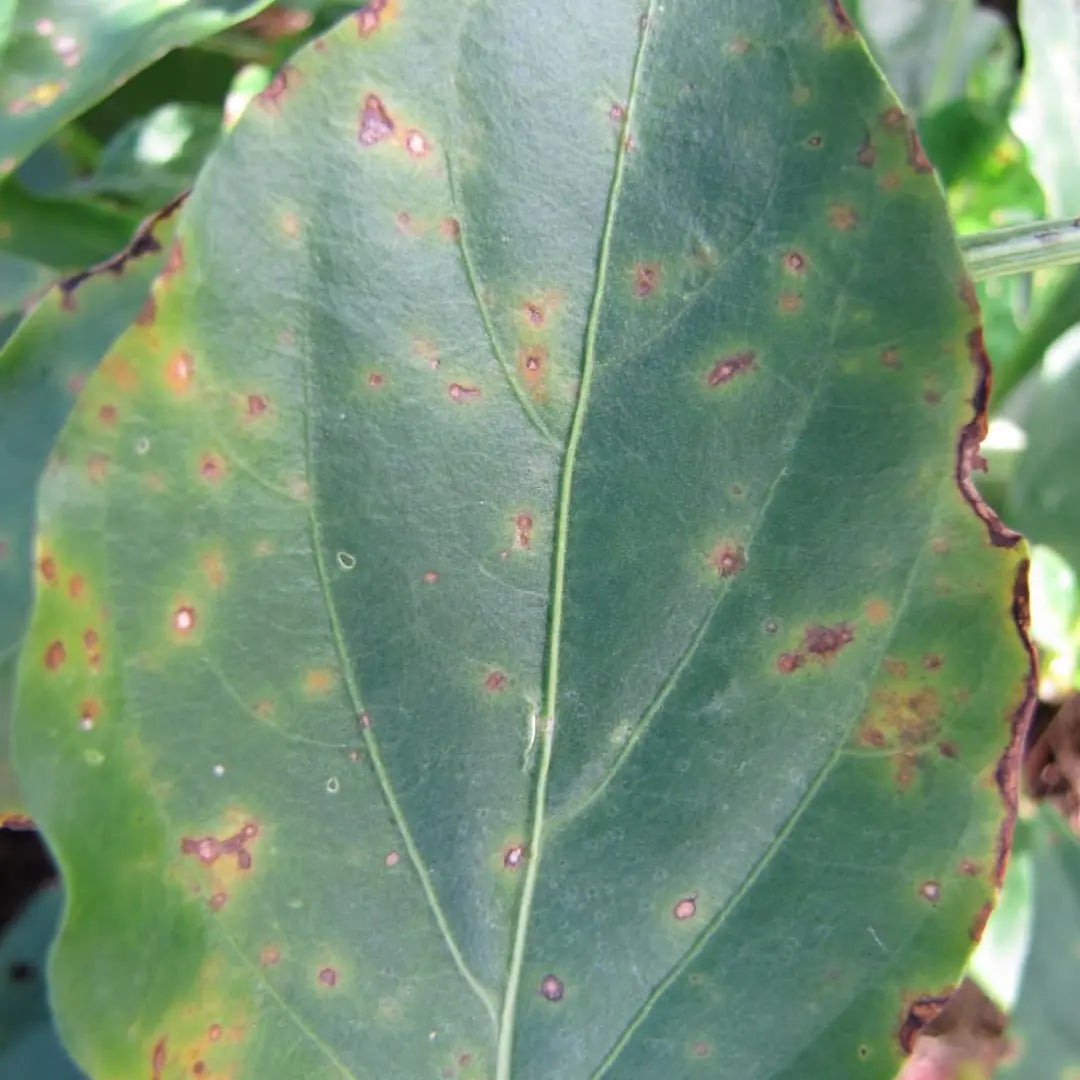
Bacterial Leaf Spot
Bacterial Leaf Spot (BLS) is a notorious disease that affects the chilli plant, causing unsightly spots and reduced plant productivity. At Ignition Seeds, we are committed to providing all the necessary information to help you protect your chilli plants from this disease. In this guide, we'll discuss how to identify Bacterial Leaf Spots and the best care practices to prevent and manage this infection.
Collapsible content
Identification
The first step in combating Bacterial Leaf Spot is to correctly identify the disease. Early identification is crucial, as it allows you to take the necessary measures to prevent the infection from spreading to other plants. BLS is caused by the bacterium Xanthomonas campestris pv. vesicatoria, which primarily affects chilli plants but can also be found on tomatoes and peppers.
Symptoms
BLS manifests as small, water-soaked lesions on the leaves, fruits, and stems of the chilli plant. These lesions usually appear during the humid spring months in New Zealand, typically between September and November. As the infection progresses, the spots may enlarge and merge, resulting in larger necrotic areas. The leaves may also become yellow and eventually drop from the plant.
In severe cases, the disease can cause defoliation, reduced fruit yield, and even plant death. The spots on the fruits may turn into raised scabs or sunken lesions, affecting the fruit's quality and making it unmarketable. BLS can also spread to the plant's stems, causing cankers and further weakening the plant's structural integrity.
Prevention and Management
The key to managing Bacterial Leaf Spots lies in prevention and early intervention. The following care practices will help you protect your chilli plants from BLS:
- Choose Resistant Varieties: Start by selecting chilli varieties that are less susceptible to BLS. While no chilli variety is entirely immune to the disease, some exhibit a higher level of resistance. Look for such varieties when purchasing seeds or seedlings.
- Practice Crop Rotation: Rotate your crops to break the disease cycle and reduce the risk of BLS. Avoid planting chilli plants in the same location where tomatoes or peppers have been grown in the past two years.
- Maintain Good Hygiene: Sanitize your gardening tools, pots, and equipment with a 10% bleach solution to kill any lingering bacteria. Dispose of infected plant material and debris, and avoid using contaminated soil for planting.
- Water Wisely: Water your plants at the base, avoiding wetting the leaves, as this can encourage bacterial growth. Watering early in the day allows the plants to dry off before the cooler evening temperatures set in.
- Provide Adequate Spacing: Plant your chilli plants with enough space between them to ensure proper air circulation. This helps keep the humidity levels down, making it more difficult for the bacteria to thrive.
- Apply Copper-based Fungicides: As a preventative measure, you can apply copper-based fungicides to your chilli plants before the onset of the wet spring season in New Zealand. Follow the product label's instructions and guidelines for the best results.
- Monitor and Remove Infected Plants: Regularly inspect your chilli plants for any signs of Bacterial Leaf Spot. If you find an infected plant, remove it immediately to prevent the disease from spreading. Dispose of the plant material carefully, avoiding contact with healthy plants.
- Use Natural Predators: Encourage beneficial insects, such as ladybirds and lacewings, into your garden by planting flowering plants that attract them. These insects feed on pests that may cause mechanical damage to your chilli plants, making it harder for the bacteria to find an entry point.
- Strengthen Plant Immunity: Provide your chilli plants with the proper nutrients, water, and sunlight to help them build strong immune systems. A healthy plant is better equipped to fight off infections and bounce back from disease.
- Prune and Stake: Prune your chilli plants to remove any dead or diseased branches and leaves, and stake them to improve air circulation. This reduces humidity around the plant, making it harder for BLS to thrive.
In conclusion, Bacterial Leaf Spot can be a challenging disease for chilli plant growers, but with the right care practices and early intervention, you can protect your plants and ensure a bountiful harvest. By following these guidelines, you'll be well on your way to growing healthy, vibrant chilli plants free from Bacterial Leaf Spot. Happy gardening from all of us at Ignition Seeds!
